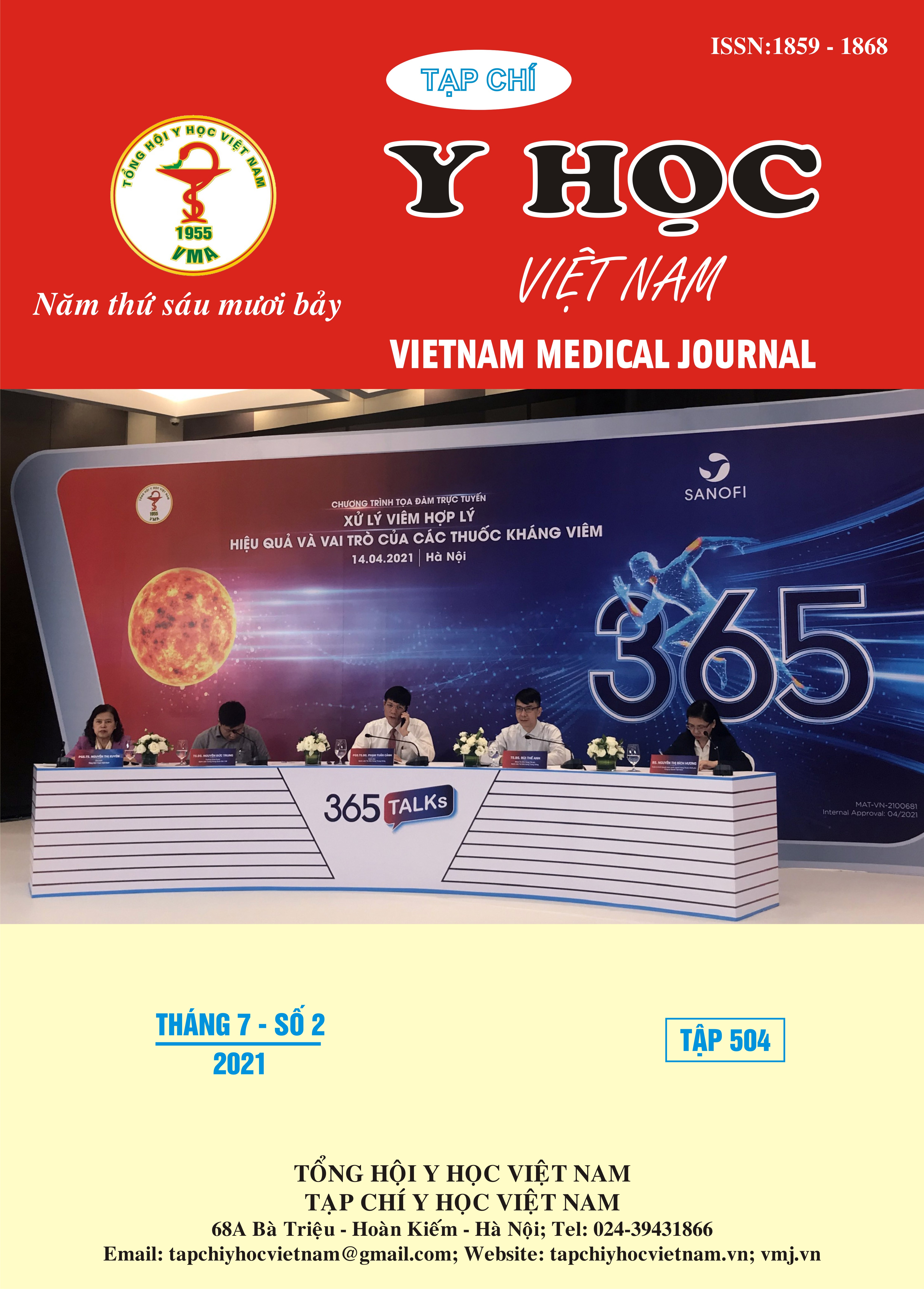ASSESSING THE STATUS OF DRUG USE IN ELDERLY OUTPATIENTS USING THE STOPP TOOL AT VINH MEDICAL UNIVERSITY HOSPITAL
Main Article Content
Abstract
Objectives: To assess the status of outpatient prescriptions in elderly patients using the STOPP tool and to investigate some factors related to the PIM index at Vinh Medical University Hospital. Methods: A cross-sectional prospective study, the research materials are prescriptions, outpatient medical records of patients with aged 60 years and older at the medical examination department of Vinh Medical University Hospital. Results: The rate of encountering potentially inappropriate drugs according to STOPP 2014 on outpatient prescriptions in the study was 18.35%, of which 21 types of PIM were recorded, the most common was using Aspirin in patients with a history of peptic ulcer without PPIs (20.34%), sulphonylureas with long duration of action such as glibenclamide, glimepiride (13.65%), PPI for treatment of uncomplicated peptic ulcer or ulcer oesophagitis at full dose >8 weeks (11.86%). Factors that increase the likelihood of encountering PIM according to STOPP 2014 include multiple pharmacology OR=2,308 (CI95%=1,130-4.711, p=0.022), digestive system disease OR=2.694 (CI95%=1,353-5,364, p=0.005 ) and circulatory disease OR=2,828 (CI95%=1.287-6.215, p=0.010). In which cardiovascular disease is the factor that has the strongest influence on the likelihood of having PIM according to STOPP 2014, the group of patients with cardiovascular disease has a 2.8 times higher risk of PIM than the group without cardiovascular disease. Conclusion: The study indicated that the rate of potentially inappropriate prescription (PIM) was 18.35%. Limit multidrug prescribing in elderly patients, especially 5 or more drugs due to the increased likelihood of PIM. Patients with cardiovascular or gastrointestinal disease are more likely to experience PIM.
Article Details
Keywords
Elderly, STOPP, PIM
References
2. Encarnación Blanco-Reina (2016), Assessing Potentially Inappropriate Prescribing in Community- Dwelling Older Patients Using the Updated Version of STOPP-START Criteria: A Comparison of Profiles and Prevalences with Respect to the Original Version, PLOS ONE | December 1, 2016, DOI:10.1371/ journal. pone. 0167586
3. Gallagher P, O’Mahony D. (2008), “STOPP (Screening tool of older persons’ potentially inappropriate prescriptions): application to acutely ill elderly patients and comparison with Beers’ criteria”, Age Ageing, 37, 673–679
4. Gallagher P, Lang P, Cherubini A et al. (2011), “Prevalence of potentially inappropriate prescribing in an acutely ill population of older patients admitted to six European hospitals”, Eur. J. Clin. Pharmacol., 67, 1175– 1188.
5. Gallagher P, Lang P, Cherubini A et al. (2011), “Prevalence of potentially inappropriate prescribing in an acutely ill population of older patients admitted to six European hospitals”, Eur. J. Clin. Pharmacol., 67, 1175– 1188.
6. Hartholt KA, van Beeck EF, Polinder S, van der Velde N, van Lieshout EM, Panneman MJ, van der Cammen TJ, Patka P, Societal consequences of falls in the older population: injuries, healthcare costs, and long-term reduced quality of life. J Trauma. 2011 Sep; 71(3):748-53.)
7. Janice B. Schwartz, M.D., FACC, MAGS, FAHA (2015), Primary Prevention: Do the very elderly require a different approach?, Trends Cardiovasc Med. 2015 Apr; 25(3): 228–239.
8. O'Mahony D, O'Sullivan D, Byrne S, O'Connor MN, Ryan C, Gallagher P. (2015), “STOPP/START criteria for potentially inappropriate prescribing in older people: version 2”, Age Ageing. 44(2), 213-218.


